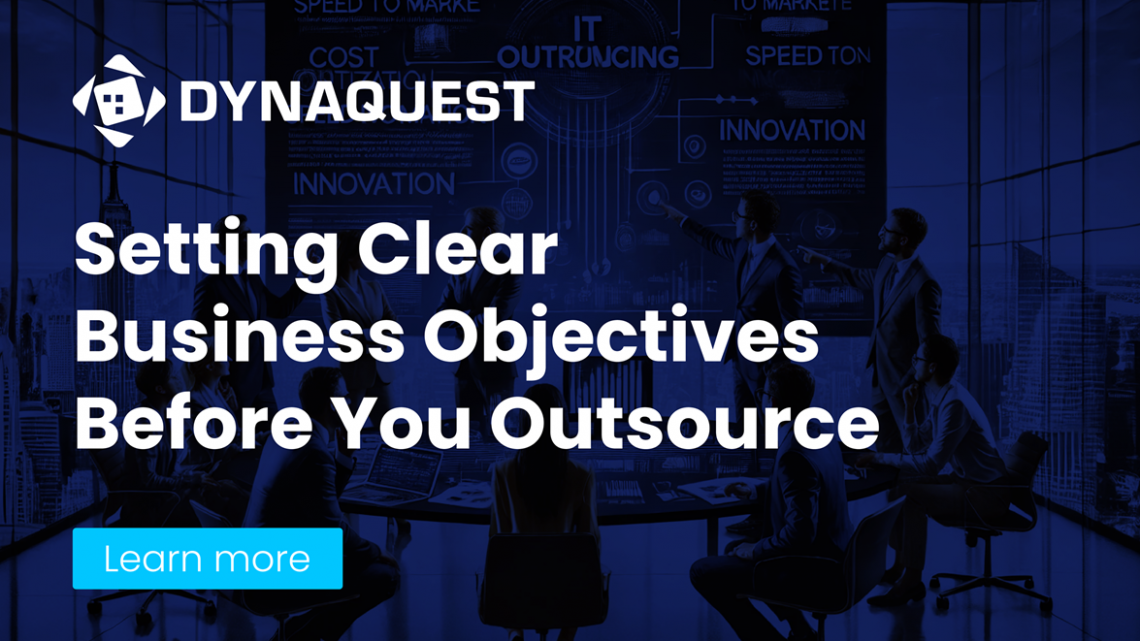
Setting Clear Business Objectives Before You Outsource
One of the biggest reasons outsourcing engagements fail is due to vague goals or misaligned expectations. Before approaching any vendor, CIOs must work with key stakeholders—CEOs, COOs, CTOs—to articulate what “success” looks like.
These objectives may include:
Accelerating product launch timelines
Reducing IT operational costs by 20–40%
Gaining access to advanced technologies or niche expertise
Improving service-level performance
Example:
A U.S.-based fintech company working with a Philippine BPO aimed to reduce the backlog of support tickets while also improving CSAT (Customer Satisfaction Score). They set two clear KPIs: resolve 95% of tickets within 24 hours and raise CSAT by 15% in 6 months. The clarity of these goals led to a seamless, results-driven collaboration.
Vendor Vetting: What World-Class CIOs Look For
Vendor selection goes far beyond pricing and capacity. Here’s what top CIOs consider non-negotiable when vetting IT outsourcing partners:
Proven Track Record – Look for case studies, references, and domain experience in your industry.
Technical Certifications – ISO 27001, SOC 2, PCI-DSS for security and compliance credibility.
Talent Profiles – Analyze developer experience, language fluency, and cultural fit.
Financial Stability – Avoid vendors that may collapse mid-project.
Scalability Potential – Ensure the vendor can expand quickly if project demands increase.
A BPO in the Philippines, Cloudstaff, distinguishes itself with transparent talent profiles, cultural training programs, and proprietary workforce analytics—factors that helped it secure contracts with major retail and tech companies in Australia and the U.S.
Table: Vendor Vetting Criteria Matrix
| Criteria | Why It Matters | What to Ask |
| Industry Experience | Reduces onboarding time and errors | Can you share similar project case studies? |
| Certifications | Proves data handling and security capabilities | What compliance standards do you meet? |
| Employee Retention Rate | Indicates team consistency and reliability | What is your annual attrition rate? |
| Language Proficiency | Avoids communication breakdowns | How fluent are your client-facing teams? |
| Time Zone Overlap | Enables real-time collaboration | Can you align work hours with our team? |
Pricing Models & Hidden Costs in IT Project Outsourcing
Understanding the real cost of outsourcing is crucial. Many CIOs get burned not because the base price was wrong—but because they didn’t account for hidden costs.
Here are the common pricing models:
| Model | How It Works | Best For |
| Fixed-Price | Defined deliverables and deadlines | Small, well-scoped projects |
| Time & Materials | Pay by the hour/day | Long-term, evolving projects |
| Outcome-Based | Payment linked to KPI achievements | Performance-driven engagements |
| Build-Operate-Transfer (BOT) | Vendor builds, operates, and transfers to client | Long-term strategic operations |
Hidden Costs to Watch For:
Project management overhead
Vendor onboarding and training
Scope changes and revisions
Communication inefficiencies
Quality assurance rework
Example:
A logistics company outsourced a warehouse automation project using a fixed-price model to a provider in Cebu City. However, unexpected regulatory requirements caused scope creep, leading to $50,000 in change request fees. A time & materials model may have provided more flexibility and reduced financial friction.
Building SLAs That Actually Protect Your Business
SLAs (Service Level Agreements) are not just technical documents—they’re legal frameworks that define accountability, expectations, and remedies. An airtight SLA is your safety net.
What a good SLA should include:
Service Scope – Detailed work breakdown and ownership roles
Quality Metrics – Uptime, response time, resolution SLA
KPIs – Custom to business goals (e.g., 98% error-free code delivery)
Reporting Cadence – Weekly, monthly, and quarterly reviews
Escalation Path – Named contacts and defined resolution timelines
Penalties/Incentives – Performance bonuses or fee reductions
Real-World Insight:
An Australian healthtech firm working with a Philippine-based developer team included real-time code reviews and a mandatory 15-minute response SLA for bugs. This was enforced through weekly sprint retrospectives. The result? 23% faster release cycles and less than 2% rework.
Team Structure & Collaboration: Aligning In-House and Outsourced Teams
CIOs must design the right collaboration model between internal teams and outsourced units to prevent duplication, miscommunication, or project drift.
Key roles include:
Client-Side Project Owner – Drives business vision
Vendor-Side Project Manager – Manages delivery
Scrum Master – Facilitates Agile rituals across time zones
DevOps Engineer – Coordinates deployment between teams
Tools that bridge collaboration gaps:
Slack / Microsoft Teams for real-time chat
Jira / Trello for backlog and sprint planning
Miro / Figma for collaborative UI/UX prototyping
Zoom / Google Meet for stand-ups and demosNew Perspective:
Some CIOs are shifting to a “follow-the-sun” model, where the in-house team finishes a sprint by EOD, and the offshore team picks it up instantly. This allows for near-24/7 progress without burning out internal staff.




